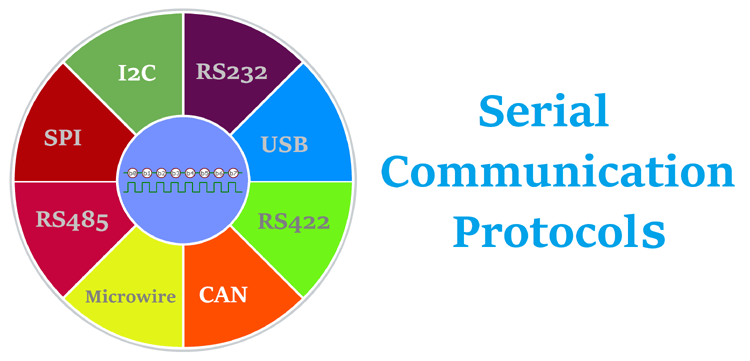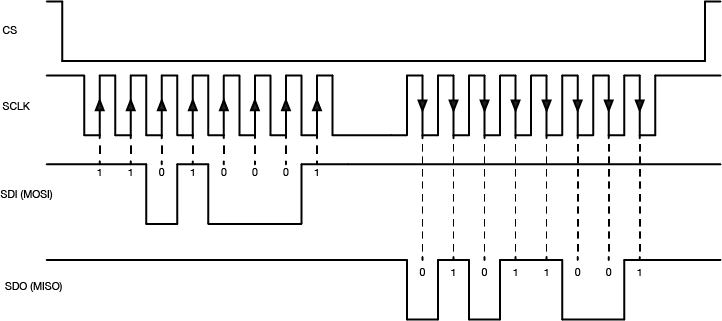
- #Serial communication protocol example serial#
- #Serial communication protocol example code#
- #Serial communication protocol example windows#
Here's an alternative protocol: u8 Sync // A constant value which always marks the start of a packet
#Serial communication protocol example serial#
Happy coding :).Simple serial point-to-point communication protocol

Let me know if you want some more similar tutorials or have any questions. Hope this small tutorial on serial port communication with c# will be helpful to you in some extent. References:įor working more with deep communication and troubleshoot, you will need to study carefully the Microsoft’s official documentation on serial object class.
#Serial communication protocol example windows#
If not, force windows to perform this action now by ‘Application.DoEvents()’ command statement. So, better to check whether any response came or not. But, it may not happen because of CPU scheduling issue etc. In this time, normally, windows do ques your work instruction and sends to devices. After writing, and before you start reading the response, it’s always good to wait for a while, thus add a slight delay, which helps to make up the time required between receiving and sending reply for the device. This array can contain several hex values to represent a single command. Then, we will write an array of bytes to the port. do other necessary processing you may want.įirst thing we are doing here, is discarding existing buffer, if any.

While ((SerialObj.BytesToRead = 0) & & (tmrComm.timedout = false)) TmrComm.Interval = timeoutperiod //time to time out in milliseconds Public void OnTimedCommEvent(object source, ElapsedEventArgs e) TmrComm.Elapsed += new ElapsedEventHandler(OnTimedCommEvent) TmrComm.Interval = 1000 //default to 1 second Here, I will give a simple prototype how the send/receive data workflow will be:

For this, you will need the corresponding firmware API command lists. and you will need to process their response as well to understand what they are saying. However, it is very important that, you have prior knowledge what kind of data the connected device is expecting. OK, now we can start doing the real communication. Read/Write Data via Serial Port Communication: If (myPort.IsOpen = false) //if not open, open the port System.IO.Ports.SerialPort myPort = new System.IO.Ports.SerialPort("COM1") Lets see an example how we can open and close ports: First step to start serial port communication is to open the port, then send/receive necessary data and finally close the port(s). Well, as have now been able to get the list of ports, now we can start communicating. Using (ManagementObjectSearcher searcher = new ManagementObjectSearcher("SELECT * FROM " +įoreach (ManagementObject serialPortObj in searcher.Get()) List< ManagementObject> objct = new List< ManagementObject> () Private List< ManagementObject> getAllComPort()
#Serial communication protocol example code#
The following code snippet will work similarly as the one given above, but it make use of core WMI and returns a list of Management objects: List< String> allPorts = new List< String> () įoreach (String portName in System.IO.())Īnd it is enough for further processing.NET can understand where to communicate via the port name in string like “COM1”, “COM2” etc. The following C# code examples will return a list of Serial port names connected to the computer: As a prerequisite, you need to make sure that, while the application is running, the windows user must need to have access to the ports. OK, lets first see whether we can detect the serial ports from within our application. If you want your laptop to live a long life you’re going to need to get rid of the heat inside of it, Laptop AXS can help you choosing a good cooling pad for your laptop and avoid this issues. But if you are using any specific type of devices which facilitate this kind of communication via USB interface, you can retrieve their PID/VID respectively and communicate accordingly.NET has a very useful internal classes which can make this kind of communication to be very easy and efficient.

One interesting thing that you might need to remember that, when the physical serial port are being used, it doesn’t have any PID or VID. This type of communication aren’t as much easy as other similar tasks such as working with logic drive on computer via c# and need use of specific kind of communication protocol. If the device do require a serial port and your computer don’t have any, you can make use of such converters easily. Serial communications can be done via either direct to physical serial port connected to the computer or via a USB to serial converter interface. In today’s programming tutorial, I am going to describe some basics about how we can perform serial port communication from our C#.NET applications.


 0 kommentar(er)
0 kommentar(er)
